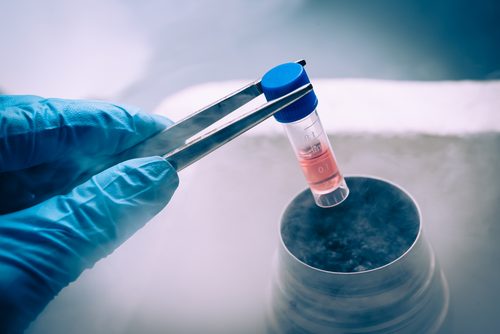Newly Identified Stem Cells Have Potential to Regenerate Blood Vessels
Written by |

A new subtype of stem cells that have the unique ability to perform two distinct functions at the same time was recently discovered by researchers at University of Queensland (UQ) in Australia.
These cells can generate both endothelial and mesenchymal cells, meaning they hold the potential to regenerate or repair blood vessel damage across the body (through endothelial cells), and tissues such as bone, cartilage, muscle and fat (through mesenchymal stem cells).
This breakthrough discovery may represent an important treatment strategy and even cure for several diseases, including pulmonary fibrosis.
“In the past, each of these stem cell would have been harvested and spun together and then given to the patient,” Abbas Shafiee, PhD, lead author of the study and honorary fellow at the UQ Centre for Clinical Research, said in a press release. “Now it is just a dual cell, which means the cell has two specific functions at the same time.”
The meso-endothelial bipotent progenitors, as the researchers called them, were described in a study, “Meso-Endothelial Bipotent Progenitors from Human Placenta Display Distinct Molecular and Cellular Identity,” published in Stem Cell Reports.
Stem cells are very singular cells that, when exposed to specific stimuli, can transform themselves into subsets of mature cells. It was believed that each subtype of stem cell could generate only one type of cells, and the existence of bipotential precursors was controversial.
Attempting to find these bipotential precursors, the researchers evaluated stem cell populations that could be found in the human placenta. They started by isolating one subset of stem cells that would be expected to produce endothelial cells.
As expected, when they cultured these isolated cells in a laboratory, they transformed into endothelial cells. However, in some experiments, mesenchymal cells overtook the culture, suggesting that a bipotential precursor was within that initial subset of isolated stem cells.
The team then divided the pool of stem cells into four groups according to the levels of one particular surface protein, called CD31. When they expanded these groups of cells, they were found to have very different behaviors, with only one able to produce both mesenchymal and endothelial cells.
When they analyzed placenta tissue, the researchers found that the meso-endothelial precursor cell population was in close contact with blood vessels. Further evaluation revealed that the stem cells were producing mature cells that were forming new blood vessels.
Kiarash Khosrotehrani, MD, PhD, associate professor at UQ Diamantina Institute and senior author of the study, said that the meso-endothelial cells hold the potential to create arteries and veins in engineered tissue to provide more effective treatments for a range of musculoskeletal and degenerative disorders, such as pulmonary fibrosis and heart disease.
Further studies are still warranted to better understand the biology of these placental-derived meso-endothelial bipotent stem cells.
“The characterization of a bipotent mesenchymal and endothelial progenitor further confirms their importance from not only a developmental biology but also from a regenerative medicine point of view,” the researchers said, adding that these stem cells “show great potential to be further explored in regenerative medicine applications for vessel formation.”






